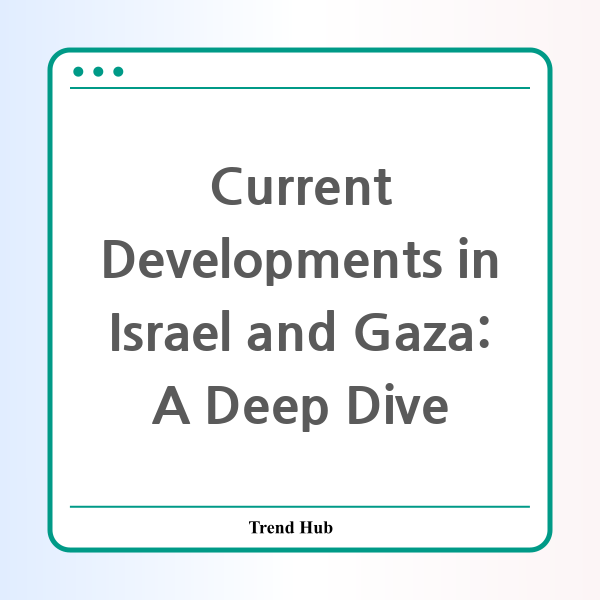* This website participates in the Amazon Affiliate Program and earns from qualifying purchases.

Is Israel and Hamas at a Crossroads? Understanding the Current Conflict Dynamics
As we witness the unfolding situation in Israel and Gaza, the complexities of the conflict deepen with each passing day. With the recent swap agreements and ongoing hostilities, it raises the question: what does the future hold for both parties?
To set the stage, it is crucial to understand the context of the latest developments:
- Leadership Changes: Israel's military chief, Lieutenant General Herzi Halevi, is set to embark on a crucial three-day visit to the United States. This visit comes at a pivotal moment as Halevi prepares to step down, making discussions on strategic and operational issues imperative.
- Ceasefire Challenges: The ceasefire in Gaza is under significant strain. Reports indicate that Israel has blocked the entry of mobile homes and heavy equipment intended for displaced Palestinians, leading to accusations from Hamas that Israel is neglecting its obligations under the ceasefire agreement.
- Violations of Agreements: The incident of an Israeli airstrike near Rafah, targeting personnel meant to secure aid deliveries, raises serious concerns regarding adherence to the ceasefire terms. Such attacks not only threaten the safety of humanitarian workers but also undermine peace efforts.
- International Tensions: The backdrop of these local events is further complicated by geopolitical factors, including meetings between Israeli officials and senior U.S. figures and broader implications involving Hezbollah and UN peacekeeping forces.
As the situation evolves, public sentiment and governmental responses are being tested. Hamas has reiterated its commitment to ceasing hostilities, provided Israel meets its end of the bargain, emphasizing the importance of international mediation in enforcing the ceasefire agreement.
The humanitarian crisis in Gaza is particularly alarming, with reports indicating that over 90% of the population lacks access to clean drinking water. The local authorities warn of a severe lack of basic resources, raising urgent calls for international intervention. The absence of mobile homes and rubble-clearing machinery compounds this dire situation, as civilians continue to suffer in the aftermath of the conflict.
The Road Ahead: Navigating a Path to Peace
Going forward, it is essential for both Israeli and Palestinian factions to engage in meaningful dialogue. The international community must play a proactive role in mediating these talks to ensure that humanitarian needs are met and that both parties adhere to their commitments.
The complexities of this conflict require a nuanced understanding, where both historical grievances and contemporary realities shape the dialogue. Whether through diplomacy or continued negotiation, a pathway to lasting peace must be established to prevent further escalation.
In summary, the unfolding events in Israel and Gaza highlight the intricate nature of conflict resolution in a politically charged environment. The stakes are high not only for the immediate parties involved but for regional stability and international relations as well. Will diplomacy prevail, or are we destined to see a continuation of cycles in the conflict? The coming days and weeks will undoubtedly be critical in answering these pressing questions.
* This website participates in the Amazon Affiliate Program and earns from qualifying purchases.